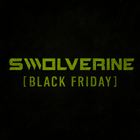In the modern landscape of performance enhancement, RAD-140—also known as Testolone and more recently EP0062 (vosilasarm)—has emerged as one of the most promising and widely researched selective androgen receptor modulators (SARMs). Designed to mimic the anabolic benefits of testosterone without the harsh side effects of traditional steroids, RAD-140 offers a unique advantage for athletes seeking lean muscle gain, strength increases, and fat loss with a more targeted and controlled approach.
Originally developed for medical applications such as androgen replacement therapy and hormone-sensitive cancers, RAD-140 has gained popularity in the fitness and bodybuilding community for its tissue-selective anabolic activity, neuroprotective potential, and favorable safety profile in early trials.
In this guide, we’ll break down how RAD-140 works, what makes it different from other SARMs and anabolic agents, and how it can be used effectively in a performance-enhancing context. Whether you're navigating your first research cycle or fine-tuning your next stack, understanding RAD-140 is essential for maximizing results while minimizing risk.
What Is RAD-140 (Testolone / EP0062)?
RAD-140, also known as Testolone and more recently referred to as EP0062 (vosilasarm), is a selective androgen receptor modulator (SARM) developed to deliver the anabolic effects of testosterone—without the typical androgenic side effects on organs like the prostate, liver, or testes.
Unlike traditional anabolic steroids, which bind indiscriminately to androgen receptors throughout the body, RAD-140 binds selectively to androgen receptors in skeletal muscle and bone, promoting muscle growth, increased strength, and fat loss.
“RAD-140 has been shown to stimulate anabolic activity in muscle while exhibiting minimal activity in androgen-sensitive tissues like the prostate.”
— Jayaraman et al., ACS Med Chem Lett, 2011
Initially created as a potential alternative to testosterone replacement therapy (TRT), RAD-140 is currently being studied under the name EP0062 in clinical trials.
How Does RAD-140 Work?
The Science & Mechanism of Action
RAD-140 (Testolone) is a selective androgen receptor modulator (SARM) that works by binding selectively to androgen receptors (ARs) in skeletal muscle and bone tissue, mimicking the effects of testosterone—but with significantly reduced activity in reproductive and other non-target tissues.
→ Anabolic Activation: When RAD-140 binds to muscle-based androgen receptors, it initiates anabolic activity that increases muscle protein synthesis, enhances nitrogen retention, and supports lean muscle growth
→ Tissue Selectivity: Unlike anabolic steroids, which activate androgen receptors across the entire body, RAD-140 acts as a tissue-specific agonist, minimizing interaction with the prostate, liver, and sebaceous glands
→ Reduced Side Effects: This selective binding reduces the risk of adverse outcomes like hepatotoxicity, prostate hypertrophy, and androgenic acne commonly seen with anabolic steroids
“RAD-140 acts as a potent androgen receptor agonist in muscle while exhibiting minimal activity in reproductive tissues like the prostate.”
— Narayanan et al., Molecular and Cellular Endocrinology, 2018
Therapeutic and Research Applications
RAD-140 is being studied as an investigational compound for several clinical uses. Preclinical and early clinical trials suggest it could be beneficial in treating:
→ Cachexia (muscle wasting)
→ Osteoporosis (bone mineral loss)
→ Hormone-receptor positive breast cancer
→ Benign prostatic hyperplasia
→ Alzheimer’s disease
→ Muscular dystrophy
→ Stress urinary incontinence
→ Erectile dysfunction
“The aim of SARMs is to maintain anabolic efficacy without the systemic toxicity of traditional androgens like testosterone or DHT.”
— Basaria, JAMA, 2010
This mechanism of action is what makes RAD-140 so compelling—it delivers testosterone-like muscle-building effects without the collateral damage of traditional anabolic agents.
Benefits of RAD-140 (Testolone)
RAD-140 offers a unique blend of anabolic power and tissue-selective action, making it a standout compound for those seeking muscle growth, strength, and fat loss without the harsher effects of traditional steroids. Below are the most notable benefits supported by research and anecdotal use.
→ Promotes Lean Muscle Growth
RAD-140 is highly anabolic and has been shown to significantly increase lean body mass. In preclinical trials, it stimulated muscle growth in a dose-dependent manner, similar to testosterone, without affecting prostate size
“RAD-140 exhibited robust anabolic activity in skeletal muscle and the levator ani without increasing prostate weight”
— Jayaraman et al., Physiological Reports
→ Enhances Strength and Power Output
Users report faster progression in lifts, better muscular endurance, and improved explosive power. This is due to RAD-140’s ability to increase ATP availability and protein turnover within muscle fibers.
→ Supports Fat Loss While Preserving Muscle
RAD-140 is commonly used during cutting phases because of its ability to preserve lean mass while in a caloric deficit. Studies show it improves body composition by promoting fat oxidation alongside muscle retention
“Selective androgen receptor modulators improve lean mass and reduce fat mass without the androgenic side effects”
— Narayanan et al., Mol Cell Endocrinol
→ Enhances Bone Density and Structural Support
In addition to muscle growth, RAD-140 positively affects bone mineral density by stimulating osteoblast activity, offering protective benefits during weight training cycles
“SARMs including RAD-140 show promise in treating osteoporosis by increasing bone formation”
— Heinze, Mechanisms of Aging And Developement
→ Neuroprotective Properties
One of the most unique benefits of RAD-140 is its potential neuroprotection. It has been shown to activate pathways associated with cell survival in the brain, possibly offering cognitive resilience during cycles
“RAD-140 demonstrated neuroprotective effects in animal models, mitigating cell death induced by amyloid toxicity”
— Jayaram et al., ACS Med Chem Lett
Side Effects of RAD-140 (Testolone)
While RAD-140 is often promoted as a safer alternative to anabolic steroids, it's not without potential risks. As a potent SARM, its effects on endogenous hormones and other systems must be considered, especially with extended use or high dosages.
→ Testosterone Suppression
RAD-140 can suppress natural testosterone production, particularly when taken at higher doses or for extended periods. While it does not convert to estrogen, suppression of luteinizing hormone (LH) and follicle-stimulating hormone (FSH) can still result in hypogonadism post-cycle.
“High-dose SARM use has been shown to reduce endogenous testosterone and suppress gonadotropin levels”
— Bhasin et al., J Clin Endocrinol Metab
→ Potential Liver Toxicity
Although not 17α-alkylated like oral steroids, there are limited reports suggesting possible elevations in liver enzymes with RAD-140, especially when stacked with other hepatotoxic compounds.
“SARMs are non-steroidal, yet liver toxicity remains a concern in some users, likely due to off-target metabolism”
— U.S. FDA SARMs Warning
→ Hair Loss and Acne
As a potent androgen receptor agonist, RAD-140 may exacerbate androgenic side effects such as acne or male-pattern baldness in genetically predisposed individuals, despite its selectivity.
→ Mood Changes and Aggression
Some users report irritability, aggression, or anxiety while on RAD-140. These are likely linked to its strong influence on the central nervous system and androgen receptor activity in the brain.
→ Lipid Profile Disruption
Preliminary studies and anecdotal evidence indicate that RAD-140 may negatively impact HDL cholesterol levels and increase LDL cholesterol, similar to other SARMs and anabolic agents
“Animal and early human data show SARMs can lower HDL and raise LDL cholesterol, affecting cardiovascular health”
— Basaria et al., JAMA
RAD-140 Dosage and Cycle Recommendations
RAD-140 (Testolone) is known for its high anabolic potency, which means effective results can be achieved at relatively low doses compared to traditional anabolic steroids. Whether used for bulking, recomposition, or cutting, understanding proper dosing and cycle strategy is crucial to minimize side effects and maximize gains.
→ Beginner Dosage
Most first-time users start with a daily dose of 10–15 mg for 6–8 weeks. This range is considered sufficient for experiencing noticeable increases in lean muscle mass, strength, and endurance, while limiting potential androgenic or suppressive side effects.
“In early trials, RAD-140 demonstrated anabolic activity at low doses, making it viable for short-term androgen replacement with minimal toxicity.”
— Jayaraman et al., ACS Med Chem Lett
→ Intermediate to Advanced Dosage
Experienced users may increase dosage to 20–30 mg per day, but doing so significantly raises the risk of testosterone suppression, lipid disruption, and other side effects. Advanced cycles should not exceed 8–10 weeks, followed by a proper post-cycle therapy (PCT) protocol.
→ Half-Life and Administration
RAD-140 has a half-life of approximately 16–20 hours, allowing for once-daily dosing. It is typically taken orally in liquid or capsule form and does not require injection, making it more convenient than traditional anabolic steroids.
→ Cycle Guidelines
| User Level | Daily Dose | Cycle Length | Notes |
|---|---|---|---|
| Beginner | 10–15 mg | 6–8 weeks | Start with lower dose to assess tolerance |
| Intermediate | 15–20 mg | 8 weeks | Monitor suppression and lipids |
| Advanced | 20–30 mg | 8–10 weeks | Only with planned PCT and bloodwork |
→ Post-Cycle Therapy (PCT)
Since RAD-140 suppresses natural testosterone, even at moderate doses, a PCT is strongly recommended after any cycle to restore hormonal balance. For PCT guidance, see our full article:
Post-Cycle Therapy for SARMs & Prohormones: Do You Need It?
RAD-140 and Post-Cycle Therapy (PCT)
RAD-140 is one of the more suppressive SARMs, especially at higher doses and longer cycles. While it doesn’t convert to estrogen or DHT like traditional anabolic steroids, it can still significantly suppress endogenous testosterone production—potentially leading to fatigue, low libido, mood changes, and loss of gains if not addressed.
→ Why PCT Is Necessary
RAD-140 binds strongly to androgen receptors, tricking the body into thinking it has sufficient testosterone, which causes the hypothalamus to reduce luteinizing hormone (LH) and follicle-stimulating hormone (FSH) production. This results in testosterone shutdown, especially after cycles longer than 6 weeks or at doses above 15 mg/day.
“Testolone (RAD-140) may produce suppression of the hypothalamic-pituitary-gonadal axis in a dose-dependent manner, necessitating post-cycle therapy in users.”
— Narayanan et al., Mol Cell Endocrinol
→ PCT Protocol After RAD-140
A standard SERM-based PCT is typically recommended for RAD-140. Here’s a sample 4-week protocol:
| Week | Nolvadex (Tamoxifen) | Clomid (Clomiphene) | Notes |
|---|---|---|---|
| 1 | 40 mg/day | 50 mg/day | Optional to use one or the other |
| 2 | 40 mg/day | 50 mg/day | Do not combine unless directed |
| 3 | 20 mg/day | 25 mg/day | Monitor mood, libido, and energy |
| 4 | 20 mg/day | 25 mg/day | Bloodwork recommended at end |
Most users choose either Clomid or Nolvadex, not both.
To support overall hormone recovery and reduce stress during PCT, Swolverine’s ZMT is an effective natural testosterone booster formulated with fenugreek-free ingredients like magnesium, zinc, tribulus, and ashwagandha.
→ Stack These Supplements With PCT
Support your recovery and reduce side effects with the following:
→ DHEA (100 mg/day): Helps restore androgen balance and combat fatigue
→ ZMT (6 capsules nightly): Natural testosterone and sleep support
→ Greens+Reds: Supports immune health and micronutrient intake
→ Krill Oil: Reduces inflammation and supports cardiovascular health
“Nutritional and adaptogenic support can enhance recovery of the HPG axis and support homeostasis after SARM cycles.”
— Basaria et al., JAMA
Stacking RAD-140: Synergy With Other Compounds
RAD-140 can be used as a standalone cycle or strategically stacked with other SARMs and support supplements for enhanced outcomes. Depending on your goal—bulking, cutting, or recomposition—stacking can optimize the effects while managing potential drawbacks like suppression or recovery time.
→ Best Stacks for RAD-140
1. RAD-140 + LGD-4033 (Ligandrol)
Ideal for bulking or lean mass cycles.
→ Both SARMs bind strongly to androgen receptors and work synergistically to maximize muscle protein synthesis.
→ Due to compounded suppression, PCT is mandatory post-cycle.
2. RAD-140 + MK-677 (Ibutamoren)
Great for muscle growth, recovery, and GH stimulation.
→ MK-677 boosts natural growth hormone and IGF-1 levels, improving sleep, recovery, and lean mass retention.
→ Does not cause testosterone suppression—makes a solid addition for long cycles.
3. RAD-140 + Cardarine (GW-501516)
Perfect for recomposition and endurance.
→ RAD enhances muscle and strength; Cardarine improves fat metabolism and stamina without suppressing hormones.
→ Excellent stack for athletes cutting or trying to stay lean while maintaining performance.
For in-depth guides on these individual compounds, visit:
→ MK-677 (Ibutamoren)
→ Cardarine (GW-501516)
→ SARM overview
RAD-140 Support Supplements
To reduce side effects and support the body during and after your RAD-140 cycle, stack with:
→ ZMT (6 caps/night): Boost natural testosterone and improve sleep
→ DHEA (100 mg/day): Replenishes androgen levels during suppression
→ Krill Oil: Supports heart, joint, and cognitive health
→ Greens+Reds: Boosts micronutrient intake and antioxidant support
These additions help mitigate hormonal suppression, reduce inflammation, and accelerate post-cycle recovery.
How Does RAD-140 Compare to Other SARMs for Strength Gains?
When it comes to building strength, RAD-140 (Testolone) stands out as one of the most powerful SARMs available. It binds strongly to androgen receptors in skeletal muscle, driving significant gains in explosive force and progressive overload potential. However, this potency comes at the cost of greater testosterone suppression, requiring proper PCT.
In contrast, SARMs like Ostarine (MK-2866) or S4 (Andarine) offer milder increases in strength with fewer hormonal side effects, making them more suitable for cutting or maintenance phases.
Strength Gains & Suppression Comparison Table
| SARM | Strength Gains | High Suppression | Best for Strength Cycles |
|---|---|---|---|
| RAD-140 (Testolone) | ✅✅✅✅✅ | ✅ | ✅ |
| LGD-4033 (Ligandrol) | ✅✅✅✅ | ✅ | ✅ |
| MK-2866 (Ostarine) | ✅✅ | ❌ | ❌ |
| S4 (Andarine) | ✅✅✅ | ❌ | ❌ |
| YK-11 | ✅✅✅✅ | ✅ | ✅ |
| MK-677 (Ibutamoren) | ✅✅ | ❌ | ❌ |
✅ = Strong / Present
❌ = Weak / Minimal
Summary
→ RAD-140 leads the pack for strength-specific outcomes among SARMs.
→ It’s best suited for intermediate to advanced users planning a dedicated bulking or strength-building cycle.
→ Due to high suppression, it requires a structured post-cycle therapy (PCT) after use.
Is RAD-140 Legal?
RAD-140 is not approved for human consumption by the FDA and is currently classified as a research chemical in the United States. It is not legal to sell or market as a dietary supplement for ingestion, though it is widely available online under “research use only” disclaimers.
U.S. and Global Regulatory Status
→ FDA Status:
RAD-140 is not approved for medical use by the Food and Drug Administration. It remains an investigational compound under pharmaceutical development (vosilasarm / EP0062) for breast cancer treatment by Ellipses Pharma.
→ DEA Classification:
As of now, RAD-140 is not classified as a controlled substance under the U.S. Controlled Substances Act. However, Congress has introduced legislation (such as the SARMs Control Act) aiming to reclassify SARMs like RAD-140 as Schedule III anabolic substances, similar to testosterone.
→ WADA & Athletic Organizations:
RAD-140 is banned by the World Anti-Doping Agency (WADA) and appears on the Prohibited List under "Selective Androgen Receptor Modulators (SARMs)." Athletes subject to testing in any sanctioned sport will test positive and risk suspension.
“SARMs such as RAD-140 are prohibited at all times under the WADA Prohibited List and pose serious health risks.”
— USADA (United States Anti-Doping Agency)
Supplement Industry and Consumer Use
→ Although illegal to market as a supplement, RAD-140 is frequently sold online in liquid or capsule form for “research purposes.” This creates legal gray areas for consumer purchase but exposes buyers to regulatory risk, product mislabeling, and purity concerns.
→ Several SARMs sold online have been found to be contaminated or underdosed, raising public health and liability concerns.
“The majority of SARMs sold online are misbranded and often contain unapproved drugs or none of the SARM advertised.”
— Bledsoe et al., JAMA, 2017
Conclusion: Is RAD-140 Worth It?
RAD-140 (Testolone) is one of the most potent SARMs available, offering impressive muscle growth, strength gains, and fat-burning potential with fewer androgenic side effects than traditional anabolic steroids. Its tissue-selective mechanism, ongoing clinical development, and strong preclinical results have made it a popular choice for athletes seeking performance enhancement without resorting to harsher compounds.
But while its benefits are notable—especially in short-term bulking or recomposition cycles—RAD-140 is not without risk. Suppression of natural testosterone, the potential for long-term hormonal disruption, and the legal ambiguity surrounding SARMs use make it crucial for users to educate themselves and proceed with caution.
For those choosing to experiment with RAD-140, having a post-cycle therapy (PCT) plan, sourcing products from reputable vendors, and stacking it with supportive supplements like ZMT, DHEA, Greens + Reds, and Krill Oil can support recovery, hormonal health, and reduce side effects.
“There is no such thing as a side-effect-free anabolic agent. Even SARMs require serious respect and post-use support.”
— Dr. Thomas O’Connor, The Anabolic Doc
Whether you’re a seasoned lifter or exploring advanced performance enhancers, knowledge, discipline, and proper support will determine your long-term success—and safety—with compounds like RAD-140.
RAD-140 (Testolone) FAQ
→ Is RAD-140 a steroid?
No. RAD-140 is a SARM (Selective Androgen Receptor Modulator), not a traditional anabolic steroid. It selectively targets androgen receptors in muscle and bone tissue to stimulate growth, aiming to reduce unwanted effects on other organs like the prostate or liver. Learn more in our SARM overview guide.
→ Does RAD-140 cause hair loss?
RAD-140 may cause hair loss in genetically predisposed individuals, though it is generally less androgenic than steroids like Winstrol or Trenbolone. While it’s designed to be tissue-selective, DHT-related side effects are still possible.
→ How long does RAD-140 stay in your system?
The half-life of RAD-140 is approximately 16–20 hours, meaning once-daily dosing is sufficient. Detection windows for drug testing are unclear, but RAD-140 can be detected for weeks after cessation in high-level athletic drug tests (USADA/WADA).
→ Can women take RAD-140?
Yes, but with caution. RAD-140 is sometimes used by female athletes for lean muscle gain without virilization, but side effects like voice deepening or clitoral enlargement can still occur depending on dosage and duration.
→ Is RAD-140 legal?
RAD-140 is not approved for human consumption and is banned by the World Anti-Doping Agency (WADA). It is legal to buy for research purposes only in many countries, but not legal for use in competitive sports. See the legal breakdown in our full guide to SARM legality.
→ Do I need a PCT after RAD-140?
Yes. RAD-140 suppresses natural testosterone production, so a proper Post-Cycle Therapy (PCT) with compounds like ZMT, DHEA, and potentially a SERM (e.g., Nolvadex or Clomid) is highly recommended to support hormonal recovery. Check out our full article: Post-Cycle Therapy for SARMs & Prohormones: Do You Need It?







